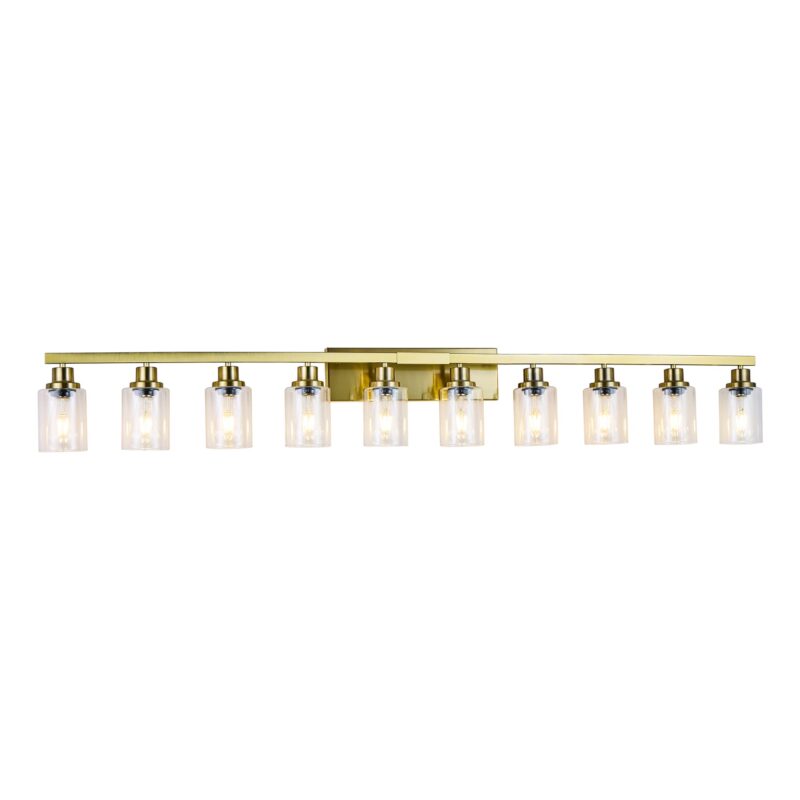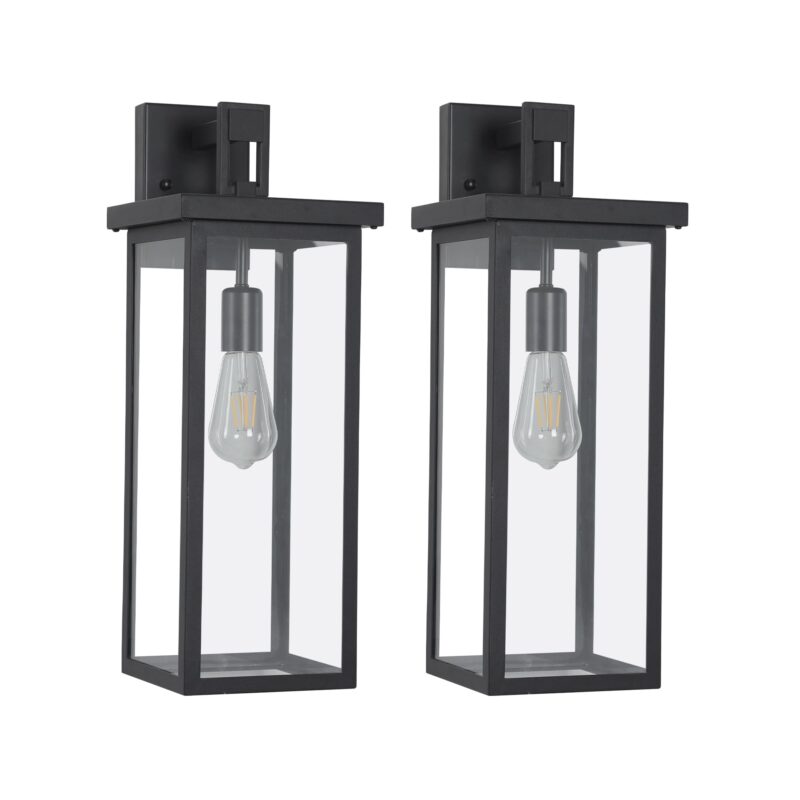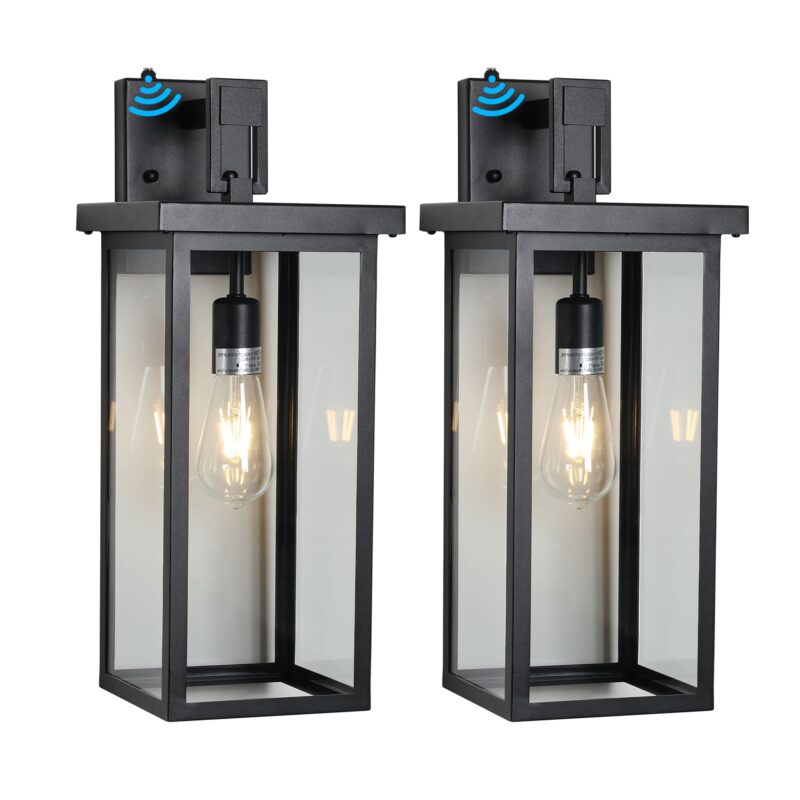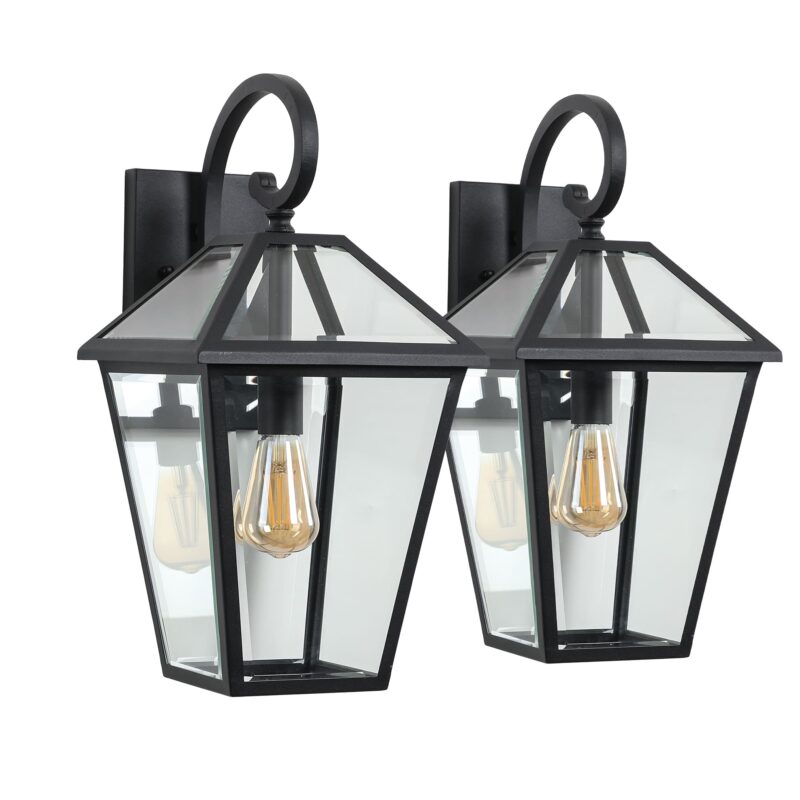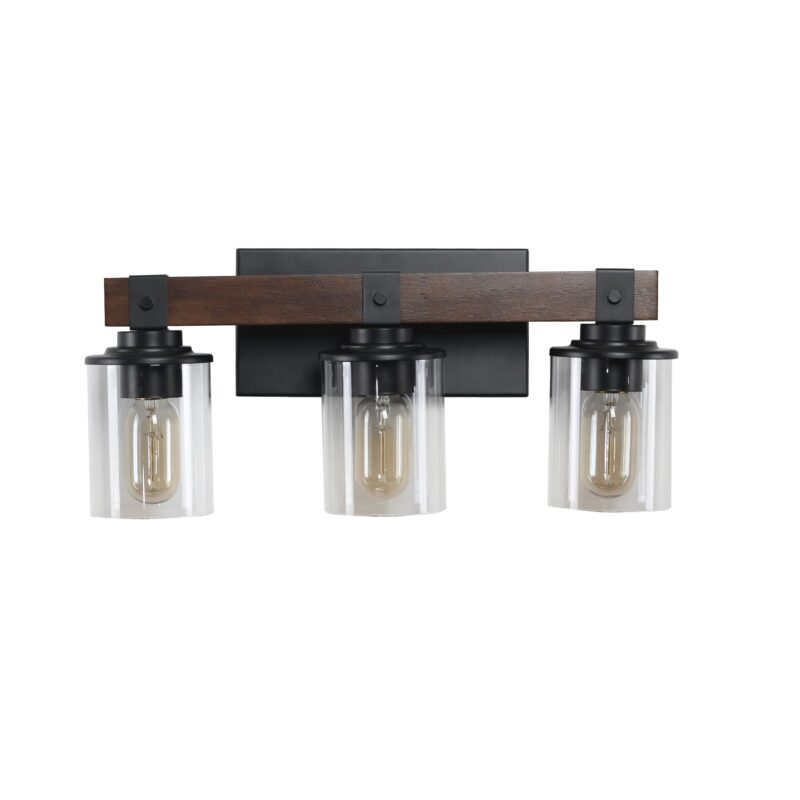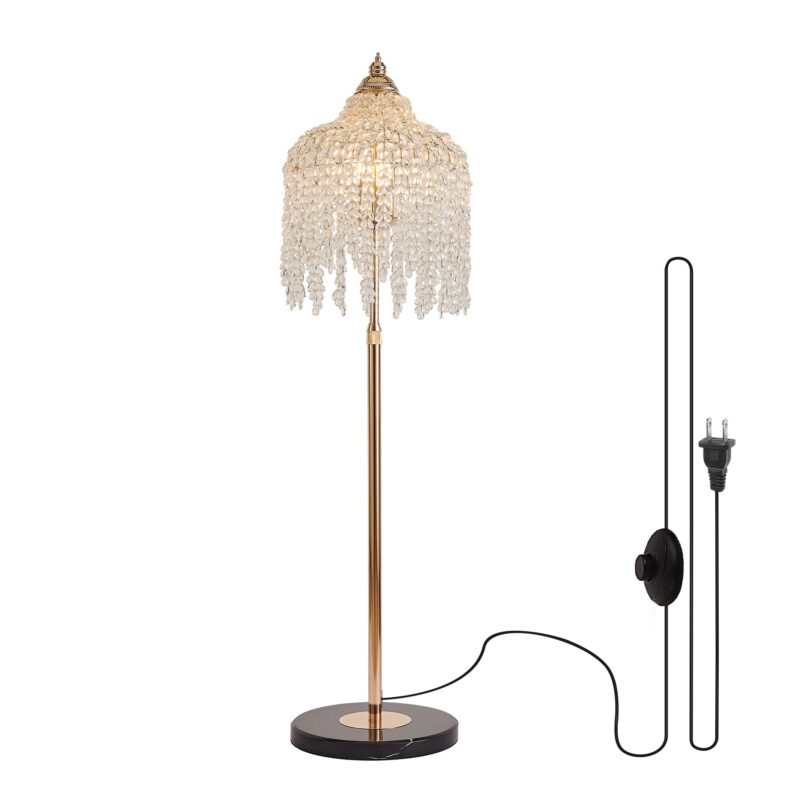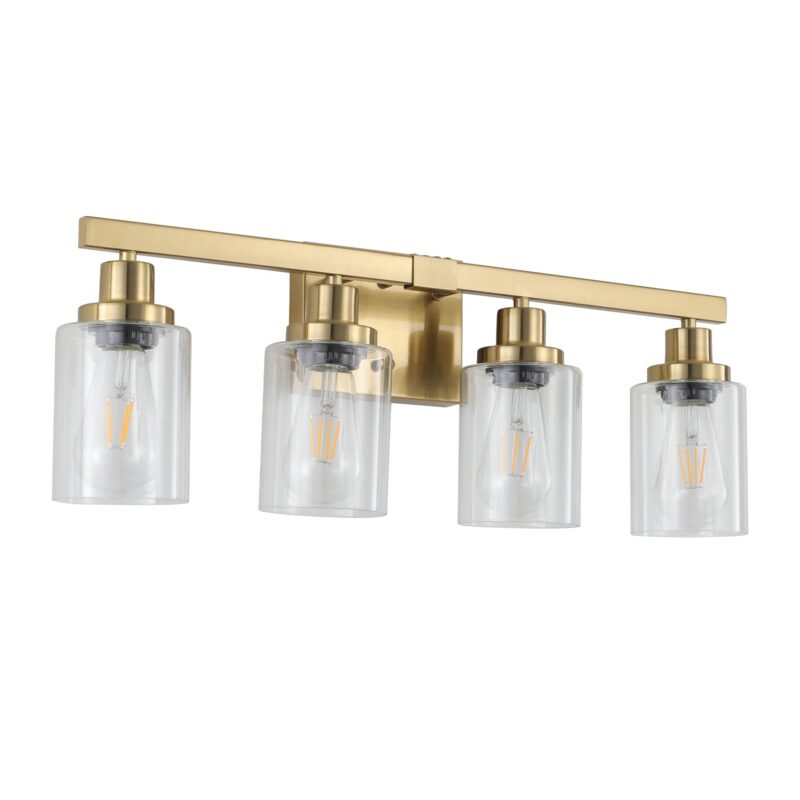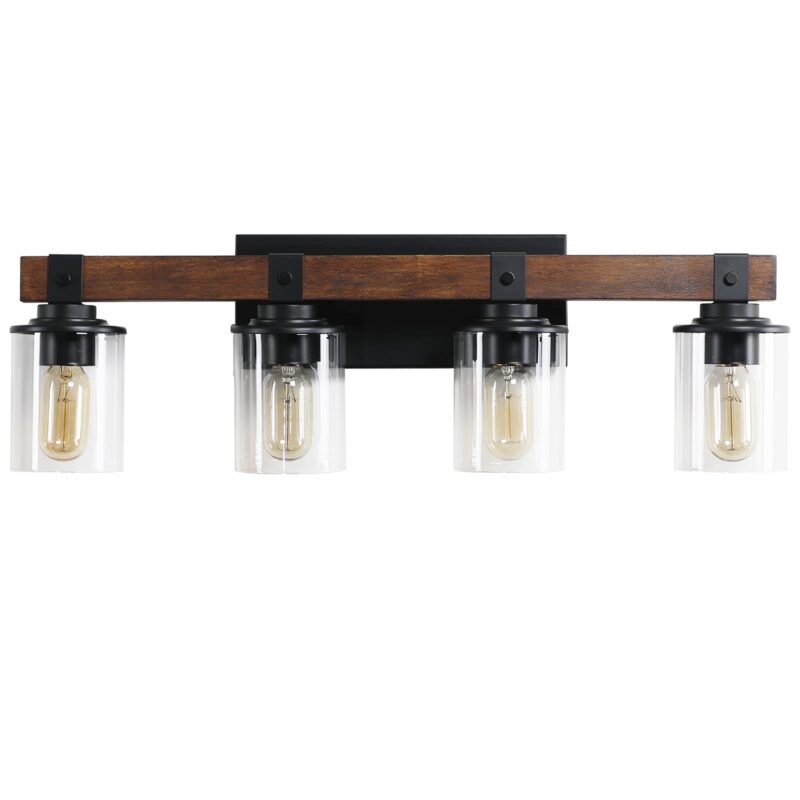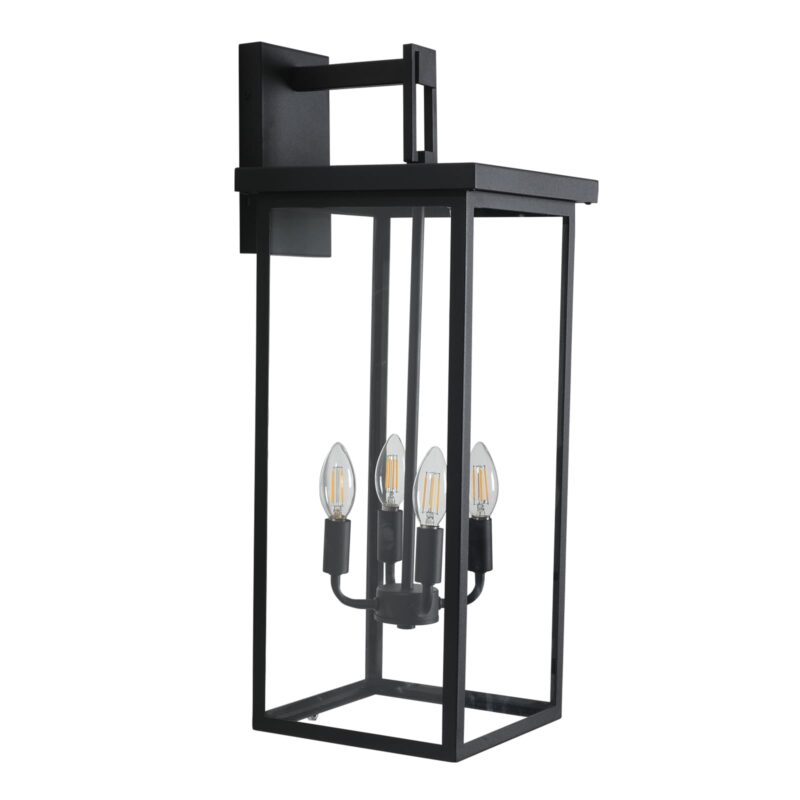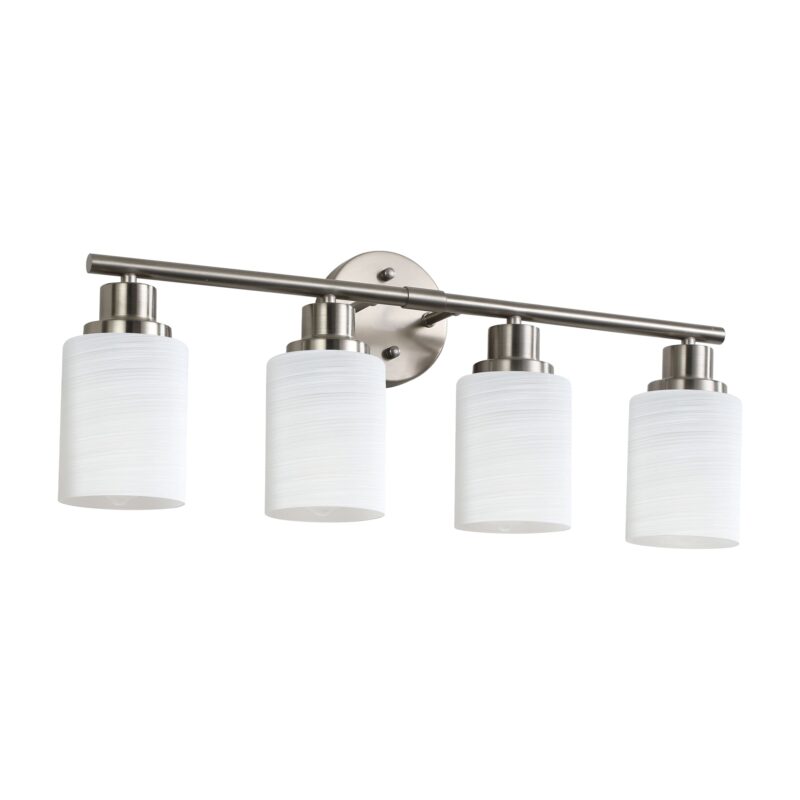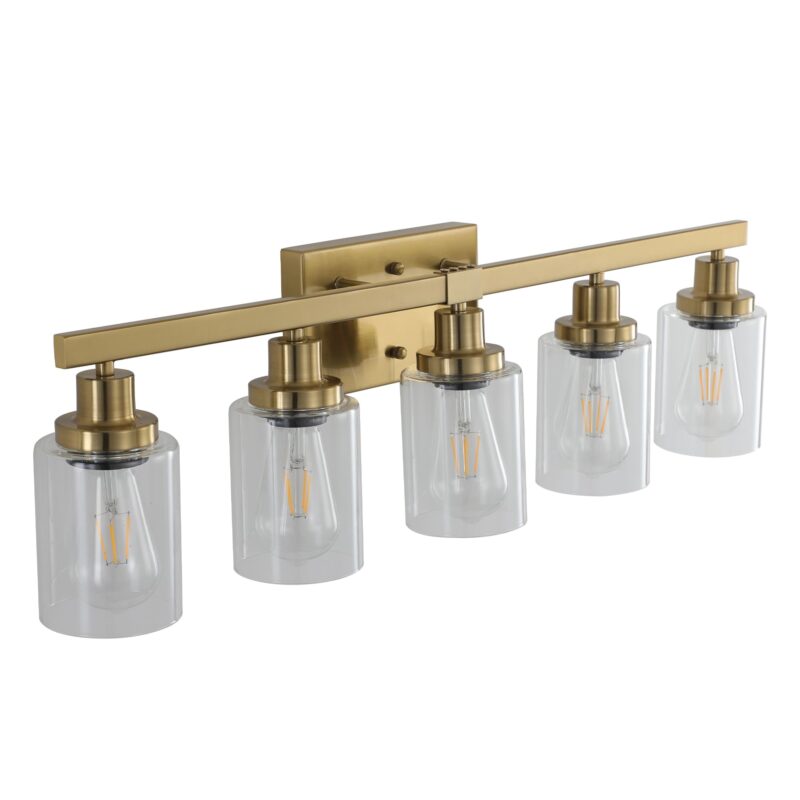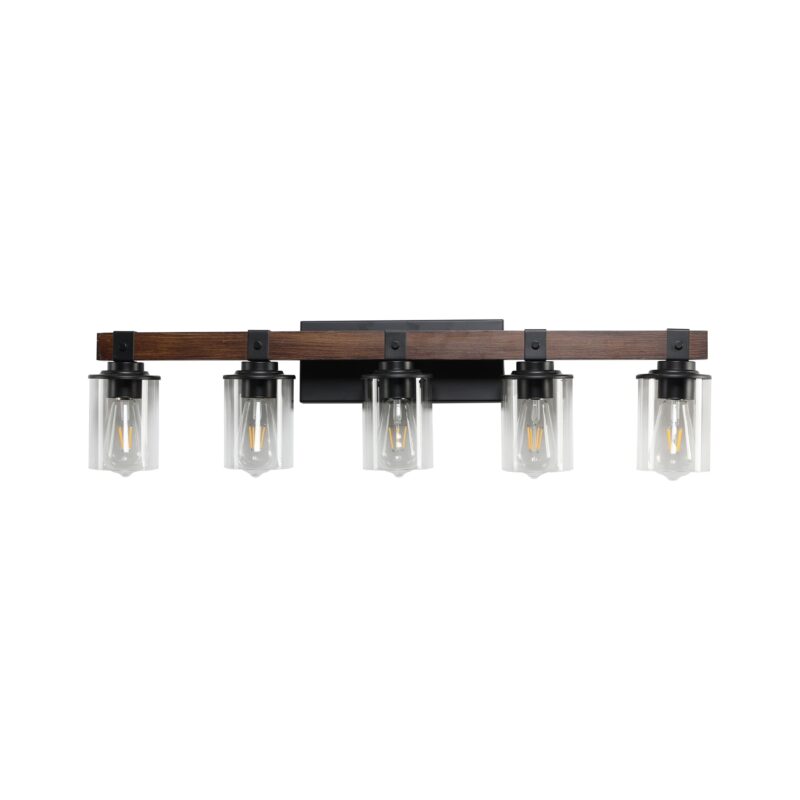A Simple Guide to Pricing Strategy for Your Lighting Showroom
You’ve just unboxed a stunning new chandelier. It’s a work of art. You know it’s exactly what your customers are looking for. You hang it in the prime spot in your showroom, and it looks incredible. Now comes the hard part: the price tag. You stare at the blank tag, and the questions start swirling. Price it too high, and it will sit here collecting dust. Price it too low, and you leave your hard-earned money on the table. Where is the magic number?
For many independent retailers, pricing feels like a guessing game. It’s a mix of gut feelings, a quick glance at competitors, and a healthy dose of hope. This lack of a clear, confident strategy is a major source of stress and, more importantly, lost profit.
This guide will end the guesswork forever. We will provide you with a simple, step-by-step system for pricing your products with confidence. You will learn the foundational models, the practical math, and the psychological secrets that empower you to set prices that not only cover your costs but also communicate your unique value and drive your business forward. Your pricing strategy is a critical pillar of a profitable retail operation, a core concept we explore in our ultimate guide for independent lighting retailers.
Table of Contents
The Foundation – What is a Pricing Strategy, Anyway?
Before we can get to the “how,” we have to understand the “why.” A pricing strategy isn’t just about picking a number. It’s a powerful tool that shapes your brand and determines your success.
Why “Just Covering Costs” is Not a Strategy
A price is a number. A pricing strategy is a system. It’s the comprehensive method and mindset you use to set prices across your entire store to achieve specific business goals. A good strategy does three things:
- Ensures Profitability: It must, at a minimum, cover all your costs and generate a healthy profit.
- Defines Your Market Position: It tells customers who you are—the value leader, the premium expert, the trendsetter.
- Aligns with Customer Perception: It must match the value and quality your customers expect from your brand.
Simply adding a markup to your cost is not a strategy; it’s a basic calculation. A true strategy is much smarter.
The 4 Critical Inputs You MUST Know Before Setting Any Price
Before you can even begin to calculate a price, you need to gather four key pieces of information. These are the essential inputs for any intelligent pricing decision.
- 1. Your True Costs: This includes not just the direct cost of the fixture (Cost of Goods Sold or COGS), but also a portion of your fixed overhead costs (rent, salaries, utilities) and variable costs (credit card fees, commissions).
- 2. Your Target Customer: Are you selling to a budget-conscious DIYer or a high-end interior designer? Their willingness to pay is a critical factor.
- 3. Your Competitive Landscape: You must know what your competitors are charging. Not so you can copy them, but so you can strategically position yourself.
- 4. Your Brand Identity: Are you a friendly, local expert or an exclusive, high-fashion design destination? Your pricing must tell the same story as your brand.
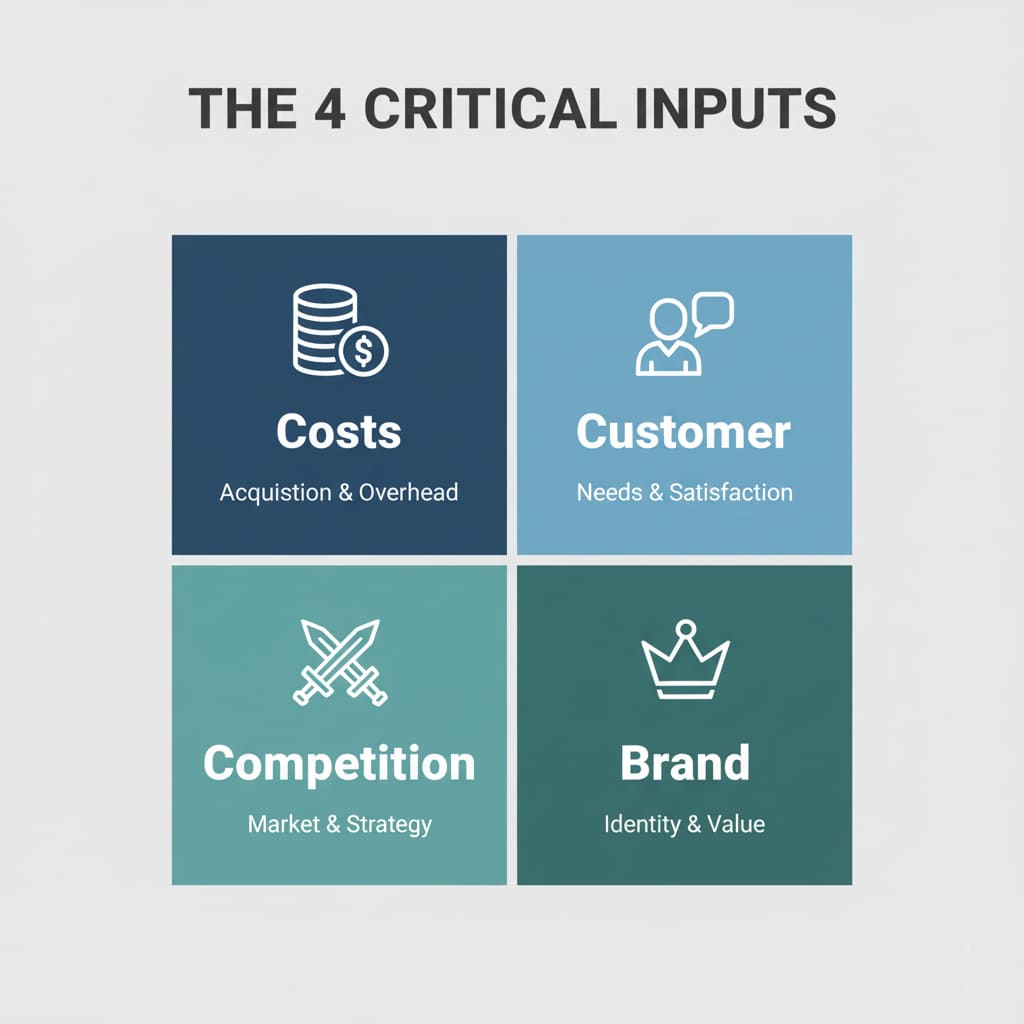
The Core Models – The 3 Ways to Price a Product
Once you have your inputs, you can choose a pricing model. There are three classic models in retail. The secret of successful retailers is that they don’t just pick one; they blend them together into a sophisticated hybrid strategy.
Model 1: Cost-Plus Pricing (The Foundation)
This is the simplest and most fundamental pricing method. The formula is straightforward: Cost of Goods Sold + Desired Profit Margin = Price. It’s easy to calculate and ensures that you make a profit on every single sale. A very common version of this is “Keystone Pricing,” which is simply doubling the wholesale cost. While it’s a safe starting point, its major weakness is that it completely ignores what the market is doing or what a customer is actually willing to pay. You could be leaving a lot of money on the table.
Model 2: Competitor-Based Pricing (The Market-Driven Approach)
This model involves setting your prices based on what your direct competitors are charging for similar items. It keeps you relevant and ensures you are not priced out of the market. However, it can be a dangerous trap. If your only strategy is to match or beat your competitors’ prices, you can easily get dragged into a “race to the bottom,” especially against online giants. This is a game that small, independent retailers can’t win. There are much smarter ways to compete with the big guys.
Model 3: Value-Based Pricing (The Customer-Centric Strategy)
“Price is what you pay. Value is what you get.” – Warren Buffett
This is the most advanced and most profitable pricing model. Instead of pricing the object, you are pricing the *solution* and the *experience* you provide. The price is based on the perceived value to the customer. This value comes from your expert advice, your curated selection of unique products, and the trust and confidence you inspire. This model allows you to command the highest profit margins, but it requires that you deliver a truly premium experience. Learn how to build the kind of experience that justifies value-based pricing in our guide.
| Pricing Model | Primary Focus | Ease of Use | Profit Potential | Brand Building |
|---|---|---|---|---|
| Cost-Plus Pricing | Your Internal Costs | Easy | Good | Moderate |
| Competitor-Based Pricing | The Market | Easy | Low to Moderate | Weak |
| Value-Based Pricing | The Customer | Difficult | Highest | Strongest |
The Verdict: A Hybrid Strategy is Your Best Bet
The smartest retailers don’t choose just one model. They blend them together:
- Start with Cost-Plus: Use this to establish your absolute price floor. You must cover your costs.
- Check Against the Market: See where that price floor sits relative to your competitors. Are you in the right ballpark?
- Adjust with Value: For your most unique, exclusive, or high-demand products where you provide significant expertise, adjust the price *upward* to capture the true value you’re providing.
The Practical Math – How to Calculate Your Retail Price, Step-by-Step
Let’s move from theory to practical, real-world math. Here is the simple, step-by-step process to calculate a retail price that ensures a healthy profit margin.
Step 1: Calculate Your True Landed Cost
Your “cost” is not just the price on your supplier’s invoice. It’s the Landed Cost—the total cost to get that product to your front door. At a minimum, this includes the wholesale cost plus any shipping and handling fees. If you are importing directly, this calculation is much more complex and must include a host of other expenses. See all the hidden fees you must account for in our guide to direct importing.
Step 2: Determine Your Target Gross Margin
Gross Margin is the percentage of the final retail price that is gross profit. It’s a crucial number to know. For a typical independent lighting showroom, a healthy target gross margin is between 45% and 55%. This gives you enough profit to cover all your operating expenses and have a healthy net profit left over.
Step 3: The Magic Formula for Margin-Based Pricing
Many retailers make a mistake here by simply multiplying their cost by a markup percentage. The correct way to calculate a price based on a desired margin is to use this formula:
Retail Price = Landed Cost / (1 – Desired Margin Percentage)
Let’s walk through an example. A pendant light has a landed cost of $90, and you want to achieve a 55% gross margin.
- First, calculate `1 – 0.55`, which equals `0.45`.
- Then, divide your landed cost by that number: `$90 / 0.45 = $200`.
- Your target retail price is $200.
Your Pricing Worksheet: A Step-by-Step Table
Use this simple worksheet to calculate the right price every time.
| The Retail Price Calculation Worksheet | |
|---|---|
| 1. Wholesale Cost | $ _________ |
| 2. + Shipping & Handling Cost per Unit | $ _________ |
| 3. = Your True Landed Cost | $ _________ |
| 4. Your Target Margin % (e.g., 55% = 0.55) | _________ % |
| 5. Calculate Divisor (1 – Target Margin %) | _________ |
| 6. = Final Retail Price (Line 3 ÷ Line 5) | $ _________ |
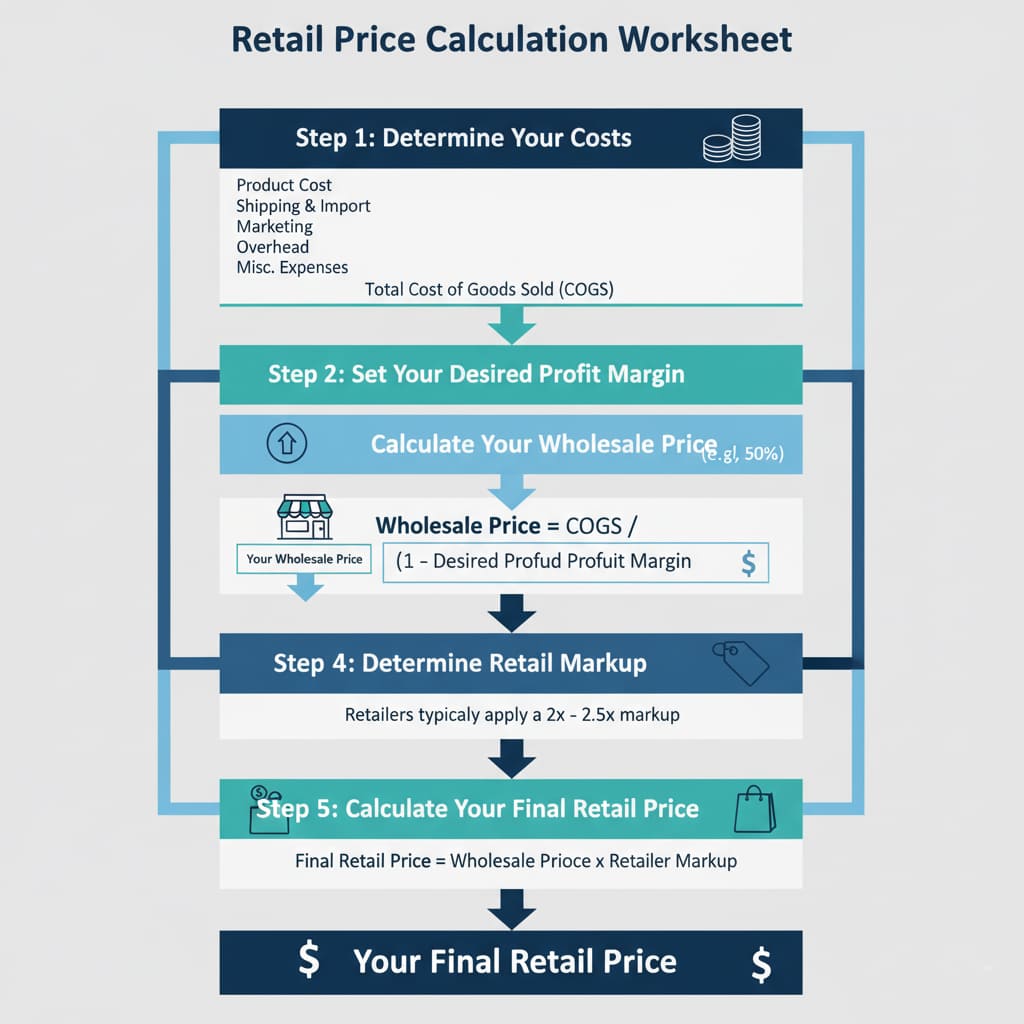
Advanced Tactics – Using Pricing Psychology to Increase Sales
The right price isn’t just about math; it’s also about psychology. Small, subtle changes in how you present your prices can have a big impact on how customers perceive them and their likelihood to buy.
The Power of “Charm Pricing”: Why $99.99 Works
This is one of the oldest tricks in the book because it works. Our brains read from left to right, so when we see a price like $99.99, we anchor on the “9.” It feels psychologically closer to $90 than it does to $100. This “left-digit effect” can make a price feel significantly lower, even when the actual difference is just one cent.
Price Anchoring: Using MSRP to Showcase Value
Anchoring is a powerful psychological principle. You can use it to your advantage by showing the official Manufacturer’s Suggested Retail Price (MSRP) and then displaying “Your Price” or “Our Price” next to it. The higher MSRP acts as a reference point, or “anchor,” that makes your price seem like a fantastic deal, even if it isn’t a deep discount. This is a great way to communicate value without having to constantly run sales.
The Art of the Bundle: Increasing Average Order Value
Bundling is the strategy of selling a package of related items together for a single price. It’s a win-win. The customer gets a complete solution at a slight discount, and you increase your average sale amount. This is also a fantastic way to introduce customers to new product categories or move slower-moving, but complementary, items. This is a key part of an effective upselling and cross-selling strategy. Learn more techniques in our complete guide.
| Bundle Idea | What’s Included | Pricing Tactic |
|---|---|---|
| The Kitchen Island Makeover | 3x Mini-Pendants + 1x Dimmer Switch | Offer the package for 10% less than buying items separately. |
| The Bathroom Vanity Kit | 1x 3-Light Vanity Fixture + 2x Matching Wall Sconces | “Buy the vanity light, get 20% off the matching sconces.” |
| The Complete Living Room Set | 1x Chandelier + 2x Table Lamps + 1x Floor Lamp | A single, attractive package price that feels like a curated deal. |
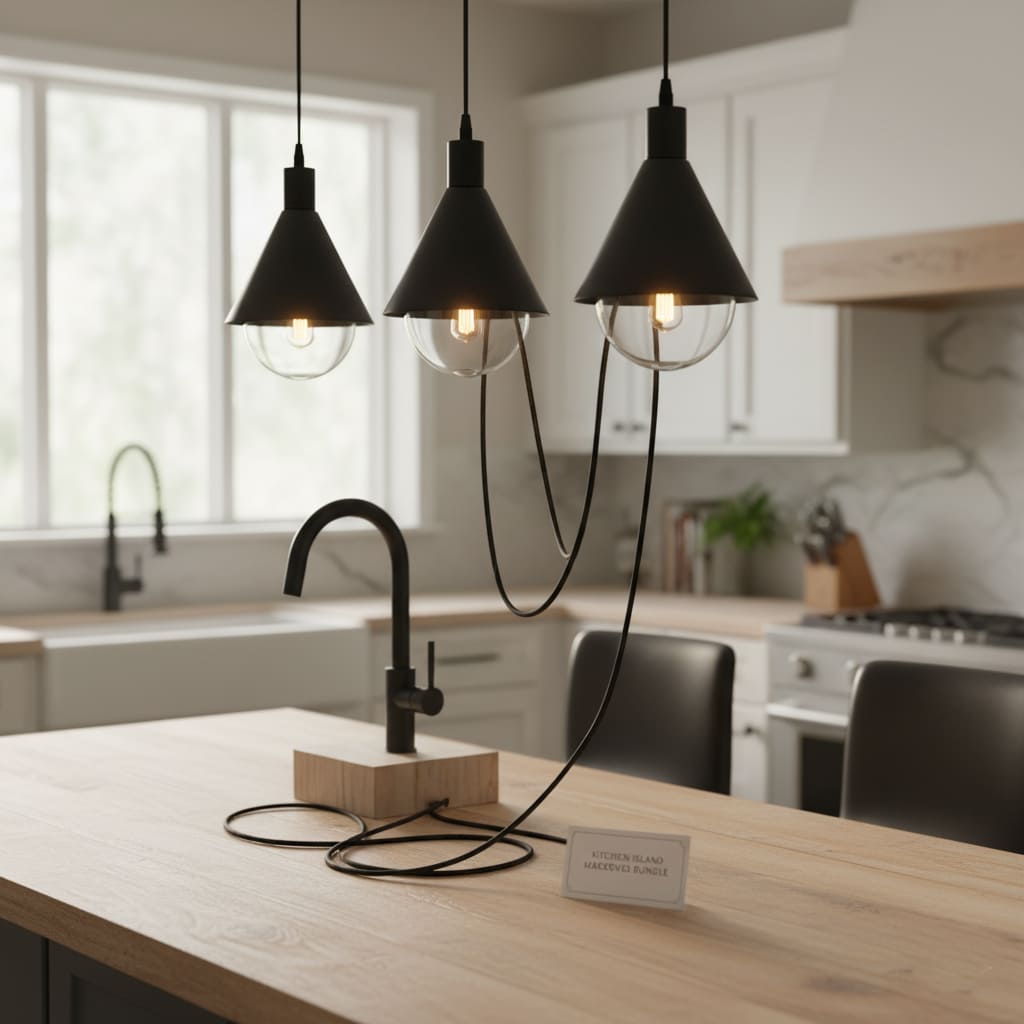
The B2B Angle – How to Price for Designers, Builders, and Contractors
Your trade customers are a vital part of your business, and they have different needs and expectations. A one-size-fits-all pricing strategy will not work for this lucrative segment.
Why You Need a Separate Pricing Structure for Professionals
Interior designers, builders, and electricians are your repeat, high-volume customers. They expect and deserve a discount off the standard retail price in exchange for the business they bring you. Creating a formal “Trade Program” is the professional way to manage these relationships. It makes them feel valued and gives them a clear incentive to source from you instead of a competitor.
A Sample Tiered Pricing Structure for Your Trade Program
A tiered structure is a great way to reward your best partners. Here’s a simple, effective model:
| Tier Level | Who Qualifies | Discount (Off MSRP) |
|---|---|---|
| Designer / Trade | Any registered interior designer, architect, or licensed contractor. | 15% |
| Premier Partner | Trade members who spend over a certain amount annually (e.g., $25,000). | 25% |
Notice that the discount is specified as being off the MSRP, not your everyday price. This is a crucial detail that protects your profit margins while still providing significant value to your trade partners. A great trade program is a cornerstone of building a strong professional network. Learn more in our guide to cultivating these vital relationships.
Conclusion: Pricing is a Conversation About Value
Pricing is not just a math problem; it is a strategic conversation with your customers. It’s the most powerful tool you have to communicate your brand’s identity, protect your profitability, and fuel your growth. By moving beyond a simple cost-plus model to a sophisticated, blended strategy that incorporates market conditions and the immense value you provide, you can take control of your financial destiny.
This isn’t a source of anxiety. It’s an exciting and creative part of building your business. Armed with the right system and the right mindset, you can now price every tag in your showroom with confidence and clarity.
Ready to Price for Maximum Profit?
It all starts with having a supply partner who provides the healthy margins and unique, high-value products that give you the flexibility to succeed. Discover how Lighting Depot USA’s factory-direct model empowers our partners to price for profit and win.
Now that you’ve mastered the art of pricing, integrate this skill into your complete business framework. Return to our ultimate guide for independent lighting retailers to build your comprehensive plan for success.
About LightingDepotUSA
The LightingDepotUSA Editorial Team specializes in wholesale lighting trends, showroom strategies, and supply chain solutions tailored for independent retailers across the U.S. With years of experience in both manufacturing and distribution, we provide practical insights to help small businesses grow, reduce costs, and stay competitive.
View all posts by LightingDepotUSA
